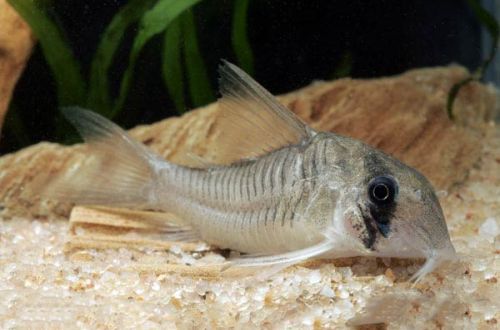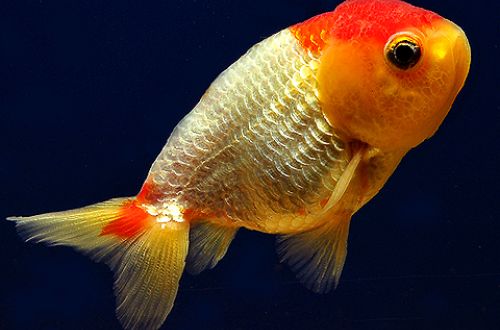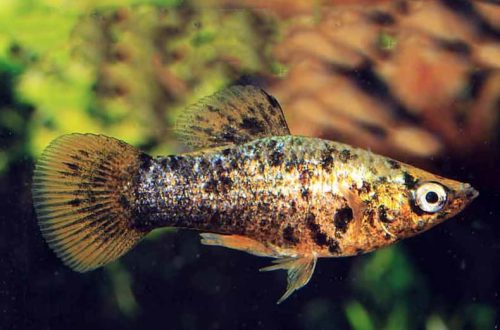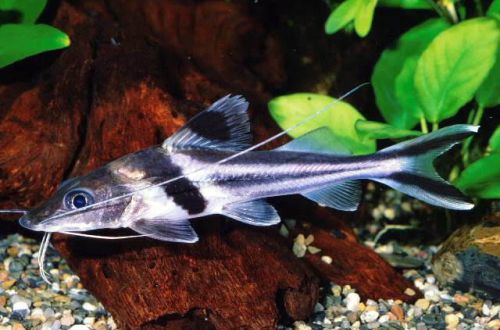
corridor gray
The gray corridor, scientific name Corydoras griseus, belongs to the family Callichthyidae (armored or callichthy catfishes). The catfish is native to the northern territories of South America, where it is found in the Esquecibo River basin in Guyana.

Contents
Description
Adults reach a length of 4–5 cm. The word “griseus” in the Latin name translates as “gray” and indicates a characteristic feature of this species – a uniform whitish color. The back is darker than the abdomen. Fins and tail are translucent. A dark stroke runs along the head through the eyes – this is the only pattern on the body of the fish.
There are several other types of Corydoras discovered later and having an identical appearance. At the time of writing, they have not yet received a scientific description and have been assigned identification numbers. Catfish C040 and C073 inhabit river systems in the Brazilian state of Rodonia on the border with Bolivia, another identical species was found in the state of Amapa (also Brazil), located near Guyana. Perhaps future research will unite all these species and the natural habitat of the Gray Corridor will be significantly expanded.
Brief information:
- The volume of the aquarium – from 70 liters.
- Temperature – 20-26°C
- Value pH — 6.0–7.5
- Water hardness – soft (2-12 dGH)
- Substrate type – sand or gravel
- Lighting – moderate or bright
- Brackish water – no
- Water movement – light or moderate
- The size of the fish is 4–5 cm.
- Food – any sinking food
- Temperament – peaceful
- Keeping in a group of 4-6 fish
Maintenance and care
Simple and unpretentious catfish in content. The optimal habitat is achieved in an aquarium from 70–80 liters (for 4–6 fish) with clean water, which is within the acceptable range of temperatures and hydrochemical parameters. Decoration may be minimal. Quite enough is a soft sandy substrate and a few snags, thickets of plants that can serve as shelters. The remaining design elements are selected at the discretion of the aquarist or based on the needs of other neighboring fish.
Maintaining a healthy ecosystem depends on the smooth operation of the installed equipment, primarily the filtration system, and the regularity of a number of mandatory procedures. The latter include the weekly replacement of part of the water (15–20% of the volume) with fresh, timely removal of organic waste (feed residues, excrement), cleaning of glass and decorative elements.
Food. Since catfish spends a significant part of their time in the bottom layer, the main requirement for food is their ability to sink. There will be no problems with the choice of products, the catfish will accept most popular feeds in live, frozen and dry form (flakes, granules, tablets, gels, etc.)
behavior and compatibility. Calm friendly fish, prefers to be in a group of 4 individuals. Compatible with many non-aggressive freshwater species.





